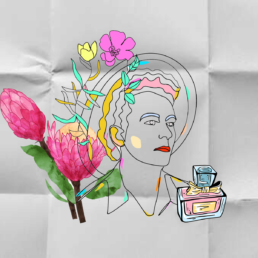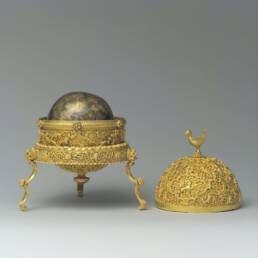In the annals of Pakistan’s press history, the era under General Zia-ul-Haq’s iron grip stood out as a particularly dark chapter. But amidst this bleak landscape, the indomitable spirit of journalistic defiance found a way to shine. In these trying times, a story to remember.
It was a time when journalistic freedom ran perilously dry and dissenting voices faced a daunting adversary in the form of a military regime intolerant of criticism. The tempest began in 1979, as General Zia sensed a growing boldness in the nation’s newspapers.
The press was becoming increasingly critical of his oppressive rule, and this newfound liberty did not sit well with the ruler. It was at this point that the curtain of censorship descended, casting a long shadow over the Fourth Estate.
Under this regime, the government took an active role in shaping the narratives that could be published and those that were deemed verboten. Provincial governments were formed, charged with enforcing pre-publication censorship through their bureaucratic apparatus.
The Sindh government wielded its censorial sword, imposing a ban on two newspapers, “Daily Musawat” and “Daily Sadaqat.” This was just the beginning of a series of measures aimed at stifling dissent and controlling the media.
If one event epitomizes the regime’s assault on press freedom, that would be the public flogging of three journalists – Nasir Zaidi, Iqbal Ahmed Jaafri, and Khawer Naeem – who were arrested and sentenced by the military court for reporting against the state.
The crackdown happened suddenly. Army officers, along with their families, witnessed these brutal acts in front of thousands of others. This brutal spectacle sent a clear message: any form of dissent against the new regime would not be tolerated.

Written directives were sent, urgent phone calls were made to newspaper offices, putting editors on notice about what could and couldn’t grace their pages, ensuring that the iron fist of censorship squeezed every last ounce of defiance from the press.
At the heart of this censorship machinery were the Information Officers, strategically stationed at every newspaper office, whose responsibility was to scrutinize every line and image slated for publication. They served as the gatekeepers of the press.
As reported by “Dawn,” each publication center devised its own compliance mechanism. At a designated cut-off time, pages ready for print were physically transported to the information department, where vigilant officers scrutinized every word, image, and opinion piece.
Yet, in the face of such stifling censorship, a form of subversion emerged. In a daring bid to defy the censor’s grip, some editors devised an ingenious tactic. They began surreptitiously embedding news or op-eds criticizing the government within other news items.
But why did they do this? Because they knew that any slightly offensive news items would be swiftly removed by the officers, resulting in blank spaces on the printed pages. However, this clever ruse would allow the readers to discern that some stories had been censored.
It was a silent protest, a signal to the discerning reader that not all was as it seemed. These blank spaces spoke louder than words, conveying that what was being printed was far from the whole truth. And so, the covert cat-and-mouse game continued.
But soon the authorities caught on to this tactic. Newspapers were now instructed to keep extra news items in reserve, ensuring that if any portion of the publication was axed, it could be swiftly replaced, leaving no trace of the censor’s hit job the following morning.
In this relentless dance between freedom of the press and the iron fist of censorship, we must remember these journalists showed steadfast resilience, leaving a legacy of creativity, courage, and an unwavering commitment to truth, even in the bleakest times of oppression.
Iqbal Jafferi, who faced public flogging for speaking the truth to power, once said, “We were proud to be whipped because we were fighting for a cause.” You see, he was fighting “simply to tell the world that there was someone standing on the battlefield.”
Sources:
Anwar Iqbal, An end is a beginning too, Dawn, https://www.dawn.com/news/774791/an-end-is-a-beginning-too
Journalists flogged during Zia’s time say they were proud of ‘punishment’, The Express Tribune, https://tribune.com.pk/story/378820/journalists-flogged-during-zias-time-say-they-were-proud-of-punishment
Zaffar Abbas, The missing pages of history: 70 years of Pakistan and Dawn, Dawn, https://www.dawn.com/news/1352579
Kaleem Butt, Sindhi Press against Censorship during the Zia Regime (1977-1988), https://www.comminit.com/policy-blogs/content/sindhi-press-against-censorship-during-zia-regime-1977-1988
Shaikh Aziz, A leaf from history: Four journalists flogged, two newspapers shut, Dawn, https://www.dawn.com/news/1179170/a-leaf-from-history-four-journalists-flogged-two-newspapers-shut
Image attributes:
Leaving blank space on news pages depicts the manner in which the national press tried to convey its plight to the readers during the Zia era. https://www.dawn.com/news/1352579
Gen Zia’s new wave of censorship stifles any and all criticism of government. —Dawn/File, https://www.dawn.com/news/1179170
English: Muhammad Zia-ul-Haq’s portrait by Pakistan Army, CC BY-SA 4.0 by Wikimedia Commons




